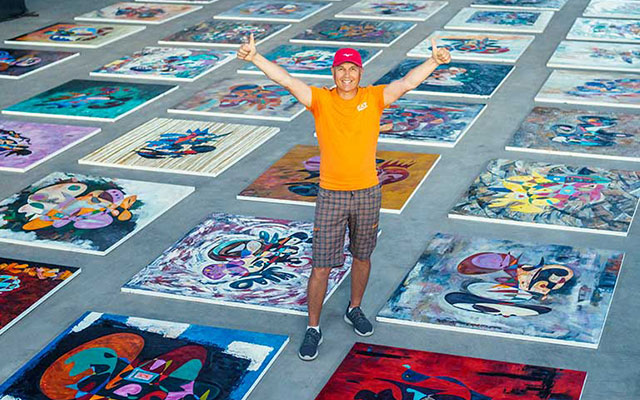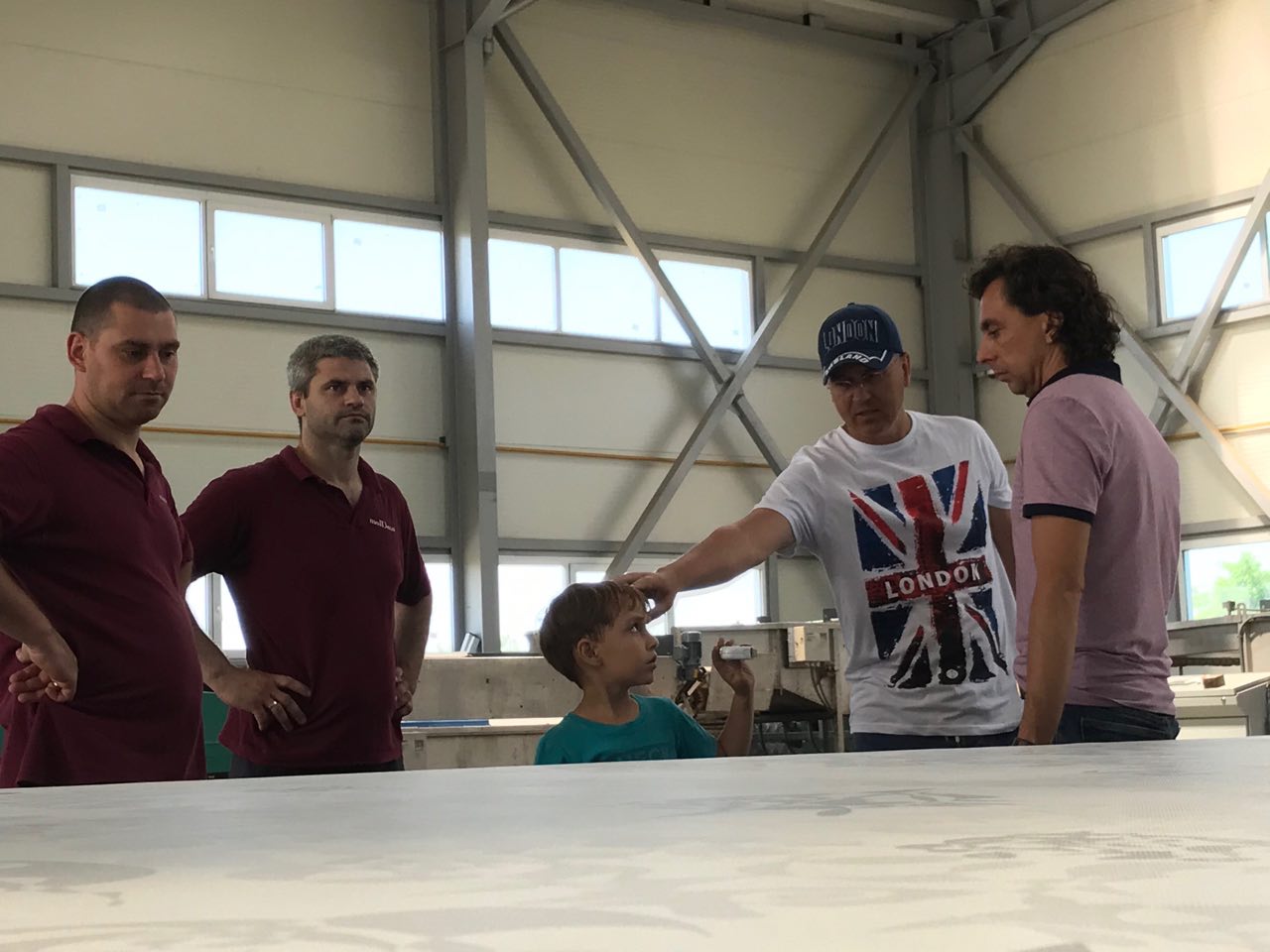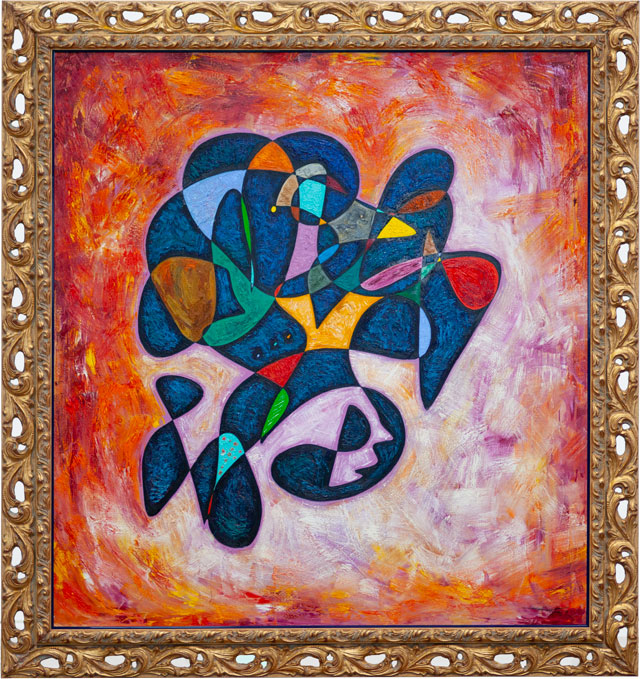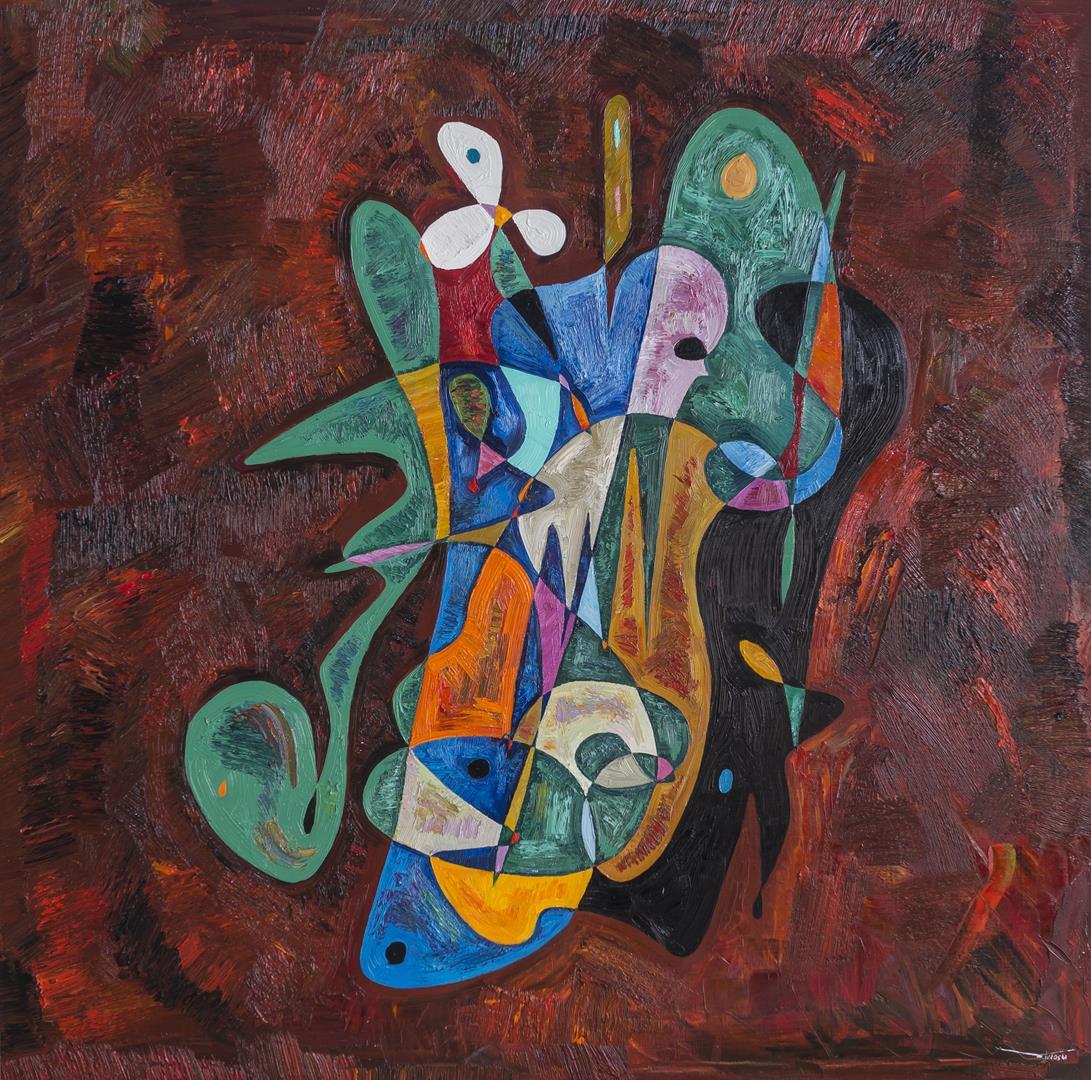- Freedom of expression. Art and Iconography
- Abstract symbolism and abstract iconography in Virtosu' Peinture

- 5 July '19


by Shane Lewis
5 July '19Freedom of expression. Art and Iconography
Iconography, as a branch of art history, studies the identification, description, and the interpretation of the content of images: the subjects depicted, the particular compositions and details used to do so, and other elements that are distinct from artistic style. The word iconography comes from the Greek εἰκών ("image") and γράφειν ("to write" or to draw).
An iconography may also mean a particular depiction of a subject in terms of the content of the image, such as the number of figures used, their placing and gestures, and related senses.
While talking about Gheorghe Virtosu art, the common tracks of conscious expressionism in humans and the physics of the social cosmos were sought by drawing an analogy between his paintings and symbolism.

Nowadays the artist continues increasing and enriching abstract art style as well as his own. He believes that "a work of art should be syncretic” and, therefore, uses a finished iconic manner as the foundation for his artwork. It is complete only when it contains the title and aesthetics with a visual message. Combining mystical expressionism, facts, and symbolic mythology, his work unites the "intelligence and perspective perception" to create a work of art, which is a fact of our history, present, or envisioned future. It gives freedom of expression.
A number of abstract artists of Abstract Expressionism era, (e.g. Mark Rothko, Robert Delaunay, Wassily Kandinski, Piet Mondrian, De Stijl, wrote:
‘We assert that the subject is crucial and only that subject matter is valid which is tragic and timeless. That is why we profess spiritual kinship with primitive and archaic art.’
"The continuing human sensibility is structured on the archaic mind; There's Only One Way to Change: Slowly, Over Time. There is a basic principle in the deep layers of the unconscious mind that sameness equals safety and change equal danger. It is why it is so hard to break a habit. Each step forward is an act of faith in the idea that change might be a good thing.” - Says Virtosu.
Art and iconography
Some of Virtosu's works have been interpreted variously. The artist's psychoanalysis leads some art critics to try to interpret the symbols in his painting. Rubin's criticism, which I believe cannot be applied generally to an iconographic analysis of Virtosu’s work, is the habit of forcing images ‘so that one finds in them what one is looking for.’ Clearly, as any reading of the various articles on Virtosu shows, there is a consistent translation of the motifs and symbols and as we see in the following piece created in 2016.

Virtosu replying in 2017 to a question about alienation stated:
"Every theory requires an example, and mine is no exception; thus, I feel obliged to put forward what, in my opinion, is the most striking example of Alien - GOD. I don’t even have to be in front of my audience to imagine the uneasy rustle rippling through the crowds:
But God is everything and everywhere, how can be Alien?
To me, God put Himself in this category the very moment He allowed us the free choice: until we willingly reach out to Him, He is as far from our intimate being like the rest of His Creation.
On that note, I would push things even further: within my artwork, Alien encompasses such things as Love, Disappointment, Betrayal, as well as emotions, states of mind, and situations which can take us over, or which we appropriate and make our own instead."
Panofsky’s method reduces meaning to the metaphoric, an association between the representation and the represented. Virtosu is not part of the same cultural or historical group as those of 20th century and he, therefore, could not share the same tacit knowledge as them: equally, modern-day art is distanced from the past.
Does Virtosu injects “willed confusions” into his works, leaving generations of viewers uncertain about its specific subject matter and content?
Certainly not as another statement of Virtosu’s desire is for a union of opposites, something the artist attributes to compositional needs. Virtosu more often chooses the middle ground and concentrates on a more literal explanation of the painting through its title. However, the validity of this could not be called in question once one realizes the painting was created from title to canvas. Virtosu has never changed a single title.
Virtosu’s works contain consciously coded references to social doctrine or voluntary signs of perceptible symbolic structures. His work is an allegory for the relationship with society and his apparent established autonomy in his artistic practice: his work is the freedom of expression of his conscious as we can see on the following religious art themes he worked in 2017.

Virtosu said, "the paintings came into existence because I have something to say. Any attempt on my part to talk about it could only make it more beautiful".
If iconography cannot be applied to Virtosu’s work, does it have a hidden narrative?
I do not believe so. Virtosu stated when questioned how a viewer should approach his art:
"Life is occupied in both perpetuating itself and surpassing itself; if all it does is maintain itself, then living is only not dying. Try to receive what the painting has to offer and bring the subject matter to what they are to be looking for. Be engulfed by the work, be drawn in and be absorbed into its idea."

-
Art Advisory Services


